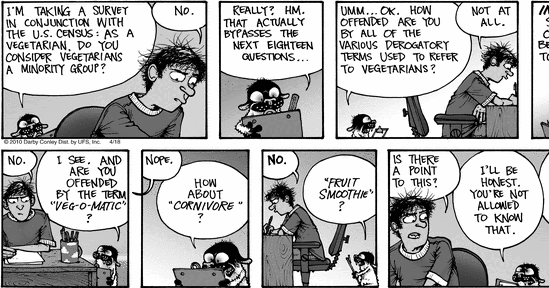Introduction
In our decision-making processes, we are often influenced by mental models that shape our perceptions and judgments. One such model that frequently comes into play is the Pollyanna Principle. Coined by psychologists Matlin and Stang in 1978, the Pollyanna Principle refers to the tendency for people to remember and prioritize positive information over negative information when forming their beliefs and making decisions.
This mental model draws its name from the optimistic and cheerful character Pollyanna, created by Eleanor H. Porter. Pollyanna exemplified the ability to find something positive in every situation, often leading her to adopt a rose-colored perspective. While optimism has its benefits, the Pollyanna Principle can sometimes lead us astray, causing us to make irrational decisions contrary to our best interests. Understanding this principle is crucial for effective decision-making and avoiding common cognitive biases.
The Psychology Behind the Pollyanna Principle
The Pollyanna Principle is deeply rooted in human psychology and can be attributed to several cognitive biases. One such bias is the positivity bias, where individuals tend to favor positive information and overlook negative aspects. This bias is influenced by our innate desire for self-preservation, as it helps us maintain a positive outlook and protect our mental well-being.
Another contributing factor is the confirmation bias, which leads us to seek and interpret information that supports our pre-existing beliefs. When confronted with positive information, we often interpret it as confirmation of our optimistic worldview, reinforcing the Pollyanna Principle. Additionally, the availability heuristic, a mental shortcut where we rely on readily available information, can influence our perception by emphasizing recent or vivid positive events while downplaying negative ones.
Examples of the Pollyanna Principle
Personal Life Decisions: Imagine an individual who has been considering a career change due to dissatisfaction with their current job. They receive an enticing job offer that presents numerous benefits and positive prospects. While aware of the potential downsides, they choose to focus on the positive aspects, neglecting the potential challenges and risks associated with the new opportunity. By succumbing to the Pollyanna Principle, they may overlook crucial factors and make a decision that is not aligned with their long-term best interests.
Business Scenarios: In the corporate world, organizations often face decisions regarding product launches, investments, or expansion plans. A company enthusiastic about expanding into a new market may primarily consider the potential profits and growth opportunities, while neglecting the cultural, regulatory, or economic challenges that could jeopardize their success. By disregarding potential obstacles, they fall prey to the Pollyanna Principle, leading to suboptimal decision-making.
Public Policy-Making: Governments and policymakers can also be influenced by the Pollyanna Principle. For instance, when designing social welfare programs, policymakers may focus solely on the positive impacts of their policies, such as alleviating poverty or improving education, while neglecting potential unintended consequences, fiscal implications, or long-term sustainability. By ignoring potential negative aspects, they may fail to create policies that address all relevant factors, leading to ineffective or even detrimental outcomes.
Cognitive Biases and the Pollyanna Principle
The Pollyanna Principle is intertwined with several other cognitive biases, further strengthening its impact on decision-making. Anchoring bias can lead individuals to anchor their beliefs and decisions on initial positive information, disregarding subsequent contradictory evidence. The optimism bias, a tendency to overestimate the likelihood of positive events and underestimate negative ones, aligns closely with the Pollyanna Principle by shaping our expectations and decisions based on an overly optimistic outlook.
Furthermore, the framing effect can influence our perception of positive and negative information by presenting it in different contexts. For example, when confronted with a potential risk, framing it as a positive outcome by highlighting the potential gains might make it more appealing and increase the likelihood of succumbing to the Pollyanna Principle.
Identifying and Avoiding the Pollyanna Principle
Recognizing when we are falling victim to the Pollyanna Principle is essential for making objective decisions. Here are some strategies to help identify and avoid this bias:
Seek Diverse Perspectives: Actively seek out alternative viewpoints and opinions. Engage in constructive conversations or discussions with people who hold different perspectives, as this can help challenge your own biases and provide a more balanced understanding of a situation.
Consider Contradictory Evidence: Be open to negative information and actively seek it out. Evaluate both positive and negative aspects of a decision or situation, weighing them objectively to form a more realistic and well-rounded perspective.
Embrace Critical Thinking: Cultivate a habit of questioning your own assumptions and beliefs. Practice critical thinking by evaluating the evidence, analyzing potential biases, and challenging your initial conclusions. This approach encourages a more nuanced understanding of complex situations.
Conclusion
The Pollyanna Principle, deeply rooted in human psychology, can significantly influence our decision-making processes. While an optimistic outlook has its merits, it is crucial to recognize the potential pitfalls of the Pollyanna Principle. By understanding the cognitive biases that contribute to this bias and adopting strategies to identify and avoid it, we can make more informed and objective decisions.
Awareness and active avoidance of the Pollyanna Principle can empower individuals and organizations to navigate challenges effectively, consider potential risks and downsides, and ultimately make decisions that align with their long-term best interests. By embracing a more balanced and realistic perspective, we can improve our decision-making abilities and enhance our overall well-being.
